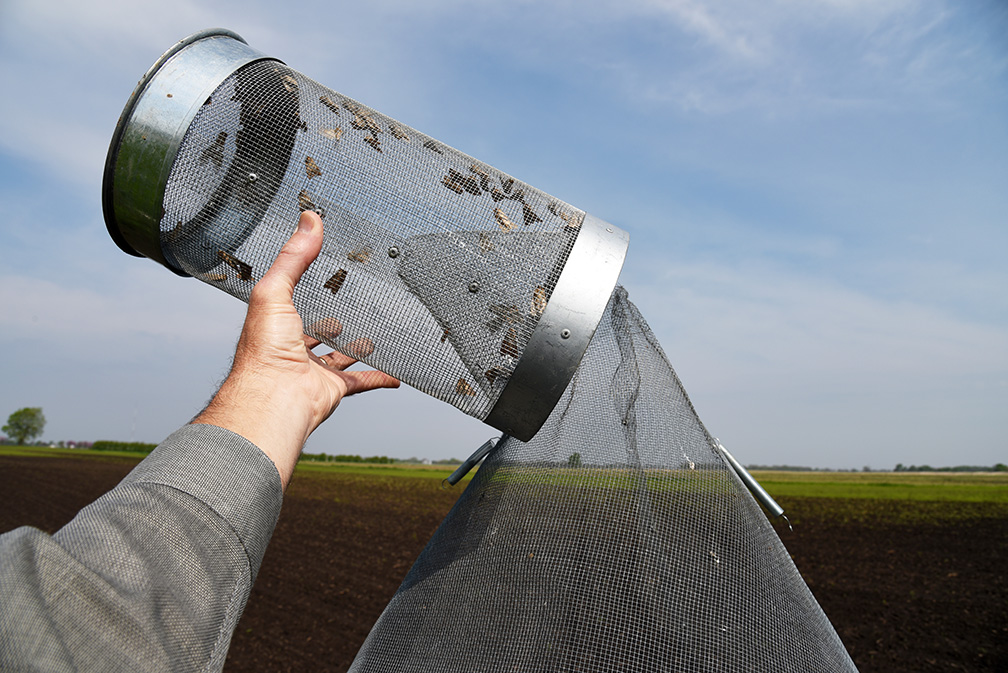
In looking over the black cutworm and armyworm pheromone reports, it is obvious that many moths have arrived into Indiana.

In looking over the black cutworm and armyworm pheromone reports, it is obvious that many moths have arrived into Indiana.
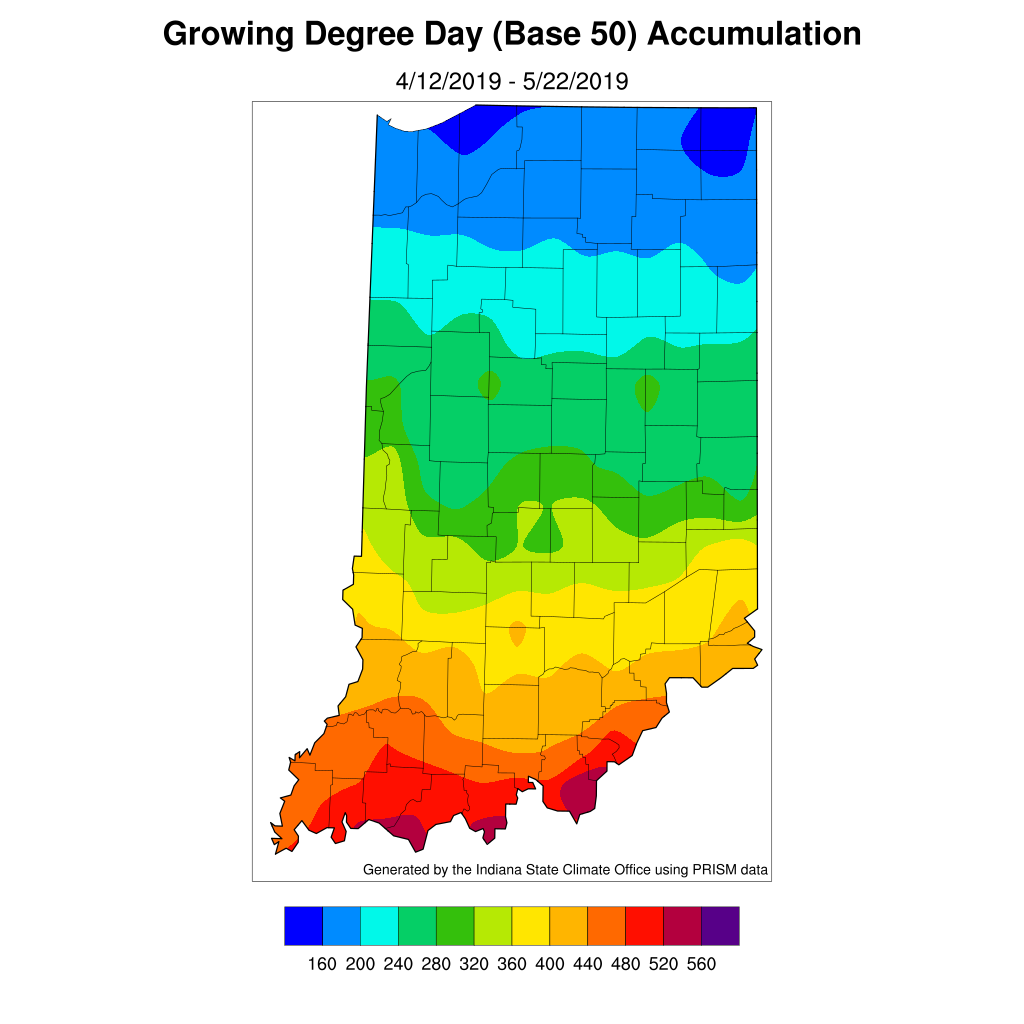
The following map, based on GDD50, is provided to assist in timely scouting of emerged cornfields for black cutworm damage.
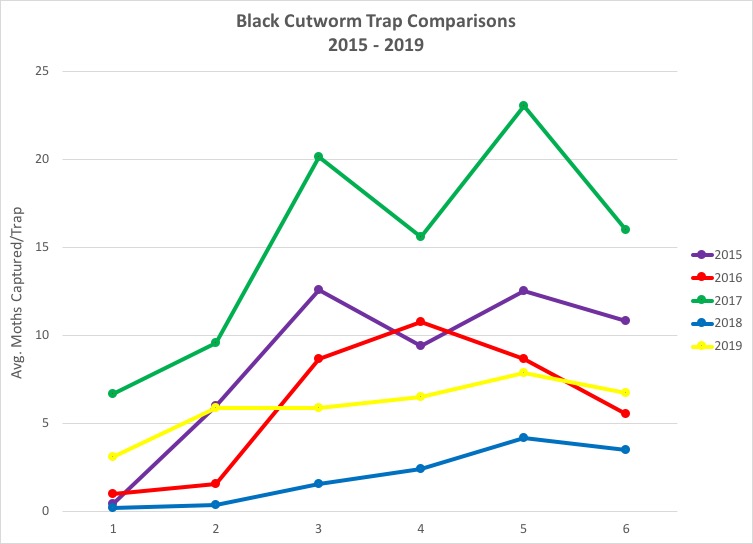
Every spring, dozens of cooperators throughout the state put forth considerable effort in trapping for the arrival and intensity of black cutworm moths.
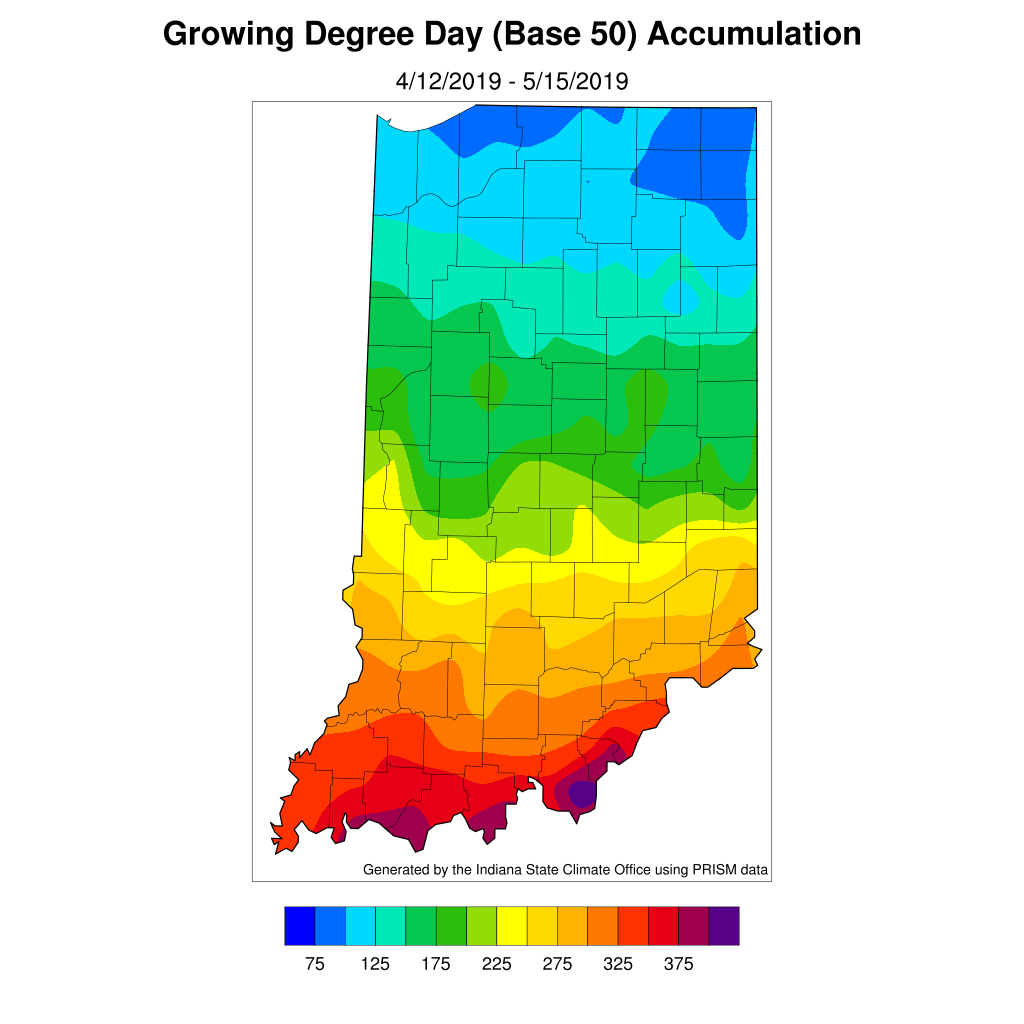
Multiple intensive black cutworm moth captures, 9 or more caught over a 2-night period, around April 12, signaled for us to begin tracking heat units (Base 50), see “Black Cutworm Pheromone Trap Report.”

Moth flights for both black cutworm and armyworm have been impressive this spring. Unworked/untreated fields are plentiful, and so is the plant life, meaning that there has been no shortage of egg-laying opportunities for these pests. Once soils dry, there will be no luxury of time to prevent a green-bridge, that is to starve the small larvae before they switch from feeding on the dying weeds/cover crops to the emerging crop. So, should one be tempted to be proactive and add some “cheap” insecticide in with the burn-down herbicides. A few factors to consider: First, seed-applied insecticides and many varieties of Bt-traited corn offer some suppression of black cutworm. The systemic activity of the seed-applied insecticide, and/or the protein production of the Bt-corn are optimal when the corn seedling is actively growing, not so much when corn is stressed. Their performance against larger larvae, >0.5”, is greatly reduced, meaning the[Read More…]

In looking over the black cutworm and armyworm pheromone reports, it is obvious that many moths have arrived into Indiana. This, coupled with a delayed planting season, increases the likelihood that high-risk fields may experience damage.
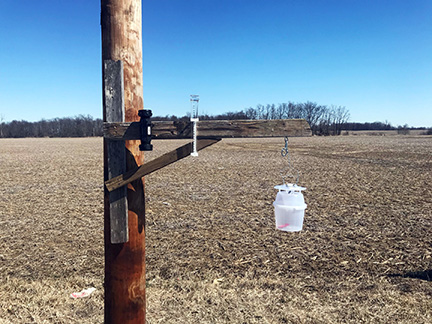
As I write this, spotty showers are moving through the state. At this time of the year, my interest is where those fronts are moving from.

Black cutworm pheromone trap cooperators have faithfully reported their week’s catches, but most haven’t been numerically challenged.

Storm systems from the Southwestern portions of the country have brought more than rain showers. Many of our pheromone trap cooperators captured black cutworm moths over the last week…though numbers are relatively low. Most surprising was the number of armyworm moths captured in East Central Indiana at the Purdue Davis Ag Research Center.

Black cutworm trap report table
© 2024 Purdue University | An equal access/equal opportunity university | Copyright Complaints | Maintained by Pest&Crop newsletter
If you have trouble accessing this page because of a disability, please contact Pest&Crop newsletter at luck@purdue.edu.